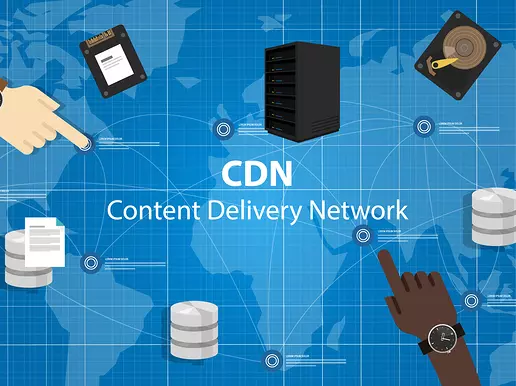Fintech has come a long way. Initially met with a substantial level of skepticism, fintech startups have proven their critics wrong. Block-chain-related currencies aren’t likely to render dollars and pounds obsolete just yet. However, banks and other traditional financial institutions have been forced to reckon with the fact that their iron grip over the financial world is a thing of the past.
The numbers back this up, as well:
According to EY’s 2019 Fintech Adoption Index, 64% of customers around the world already use at least one fintech platform, while 96% are aware of the existence of at least one fintech app or service.
All of these stats undoubtedly put a smile on fintech investors’ and enthusiasts’ face. However, many startups have begun finding difficulties in marketing themselves.
“Fintech is a niche market; there are so many companies offering complex, and, to an untrained eye- interchangeable services.”
So, how can fintech companies cut through the noise, and deliver a message that will truly resonate with its audience?
Marketing for Fintech: The Challenges
Marketing a fintech company is a complicated task. They operate within a saturated market; only a select few companies manage to survive the early stages and graduate to functioning, profitable entities.
Fintech startups’ greatest challenge is whom they must compete with. Banks and large financial institutions spend billions in research and development, and are constantly looking for ways to emulate (or straight-up poach) up-and-coming technologies.
Saas platforms and general tech startups have it a bit easier. So many technological companies offer innovative solutions that no established tech companies can. Additionally, a huge chunk of their market is B2B. It is far easier to segment a B2B market, and getting to your target audience is somewhat less high of a task.
Conversely, Fintech companies operate an environment that is far more B2C-oriented. These startups need to figure out a way to lure customers away from establishments that have been staples of human society for millennia.
“For them to succeed at this, fintech startups must gain their prospects’ trust. An emphasis should be given toward educating their potential consumers, as a means to have their financial expertise become clear.”
The challenges don’t end here. There are elements within the fintech and the financial industry as a whole that lead to it having less than a stellar reputation. The recent highlighting of Forex companies operating nefariously does not make life easy for fintech companies looking to convince people to invest their hard-earned money in an unknown financial innovation. Building credibility is mission-critical.
Lastly, the elephant in the room needs to be addressed: There is an enormous disparity in marketing budgets.
In 2018, the top five ranking banks in the U.S spent over $1B each on marketing.
The fintech market is made up primarily of startups. With limited resources and personnel, these companies are going to have to find original ways to stack up with their deep-pocketed rivals.
The solution: Video marketing
Before we jump into it, it’s worth noting that videos work best when used sparingly as part of a larger campaign, coupled with other kinds of content.
It’s always advisable to set goals before you adopt a new technology; video marketing is no different. Doing so helps you to better focus your marketing strategy and to decide what kind of video will be the best option.
Creating market awareness
A well-crafted video, one that cuts straight to the heart of the issue can grab a prospect’s attention better than almost any other method. Start with an awareness video. These are geared specifically toward generating a sense of familiarity with your product, and are focused less on pushing it on new customers. Of course, that’s the impetus for the video, but it shouldn’t dictate it’s theme and messaging.
Here are two popular forms of awareness videos:
1. Company overview video: A company overview video serves to introduce your company to people that have never heard of it before. Alternatively, if they have, it exposes them to your work culture and the kind of services you offer. This one’s a no-brainer and is used by most startups.
2. Company anniversary video: Whenever a startup reaches a milestone (or nevertheless wants to convey that it has), it will produce one of these. These videos will be self-aggrandizing in some ways, and draw attention to the significant progress a company has made over its lifetime. Many startups, see this as an opportunity to say thank you to their customers, as well as expose new comers to your employee and company culture.
Generating leads
Here is where the traditional marketing we all know and love comes in. The following videos are meant to seek out prospects from within a relevant, targeted audience and explain that you can solve their problems with your product.
Here are the most common types of lead-generating videos fintech startups should explore producing:
1. Product overview videos: A product overview is a simple explanation of what your product does and how it can benefit the viewer. Its main purpose is to push your prospective customer further down the funnel, rather than close the deal then and there. These are the most common kinds of marketing videos found online.
An example of a well-made product overview video was done by Crowdcube. An investment crowdfunding platform, Crowdcube allows customers to deposit money and invest it at any time. Crowdcube states its main purpose – to enable anyone to become an investor – and gives a brief overview of its successes.
2. Webinars: Webinars have become a staple of the startup ecosystem. They are a long-form kind of video content, and enable an individual or company representative to establish himself as an authority on the internet. These aren’t usually readily-available to the public, so anyone that joins needs detailed information about what you have to offer.
Nurturing leads
If you manage to get your lead to this point in the funnel, there is a dis he or she find your product or service desirable. All that’s left is to create a relationship with them and convert them into a paying customer. At this point, demonstrating value is key.
Here are three types of videos you can offer a prospect to help butter him or her up toward the conversion territory:
1. Product demos: A product demo can either be a personalized demo, especially when dealing with B2B customers, or a general video addressing FAQs. Individual customers may also request personalized demos depending on your workflow and business model.
2. Customer testimonials: Humans are social creatures by nature, and in the event of uncertainty, they seek out affirmation that they are making a good decision. A well-made, earnest customer testimonial video can prove incredibly effective.
3. Case studies: Relaying how your product or service generated more business for your customer is very powerful sales pitch. Addepar, an investment management technology company that offers an integrated financial software is really hits the ball out of the park with their video case studies. It produces 5-7 minute videos that point the stage light almost exclusively on their customer and his problem. They manage to convey an organic feeling of satisfaction (and almost gratitude) felt by a client whom has been able to prosper thanks to Addepar.![]()
It’s an exciting time to be in fintech. To position yourself as a company that should be reckoned with, it would be advisable to develop a thorough marketing strategy. Given that video will be core to any and all marketing endeavors, it is highly recommended you use a sophisticated video hosting platform, such as Cincopa’s. That way, you will be able to make the most out of your videos.














